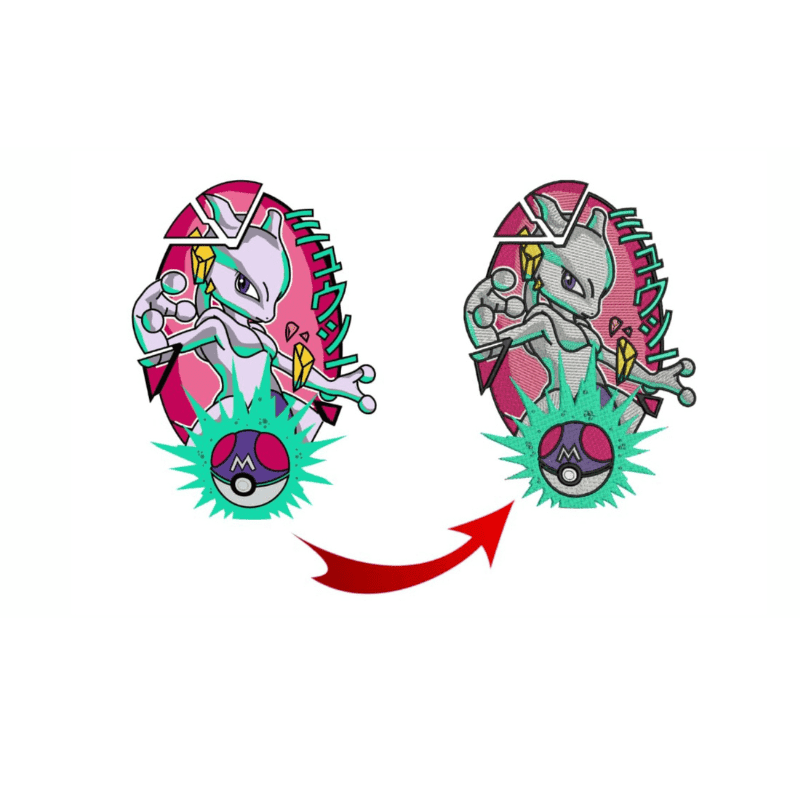Custom-made Digitizing for Embroidery: Customized to Your Requirements
Custom-made Digitizing for Embroidery: Customized to Your Requirements
Blog Article
Understanding the Embroidery Digitizing Refine: Your Ultimate Overview
Needlework digitizing is a careful craft that requires precision and knowledge to translate intricate designs into digital formats for equipment needlework. As craftsmens get started on this journey to master the embroidery digitizing process, an extensive understanding of the fundamentals sets the structure for excellence. Nevertheless, beyond the rudimentary expertise exists a world of innovative software application, specialized tools, and nuanced strategies waiting to be explored. By delving right into the nuances of digitizing, one can open a world of imaginative opportunities and boost their needlework projects to brand-new heights.

Understanding Embroidery Digitizing Fundamentals
Embroidery digitizing basics create the structure whereupon complex designs are converted into machine-readable styles for accurate sewing. This preliminary action in the embroidery digitizing procedure is vital for making certain that the last embroidered product is a devoted depiction of the initial style. Recognizing embroidery digitizing basics includes comprehending vital concepts such as stitch kinds, stitch direction, thickness, underlay, and pull settlement.
Sew types play a crucial role in figuring out the visual and textural result of the stitched style. By selecting the suitable stitch type, whether it be satin, fill, or running stitch, digitizers can achieve the wanted effect and improve the general quality of the needlework. In addition, sew instructions affects the circulation and dimension of the design, while thickness determines the spacing and protection of the stitches.
Additionally, rug stitching provides stability to the design by securing the fabric and preventing distortion during the needlework process. Pull compensation is an additional important consideration to neutralize the all-natural tendency of fabric to agreement when sewn. Grasping these embroidery digitizing essentials is basic for developing professional-quality embroidered items.
Picking the Right Digitizing Software
Selecting the ideal digitizing software is a crucial choice that significantly impacts the effectiveness and top quality of the needlework digitizing procedure. Digitizing for Embroidery. When choosing the best digitizing software application, it is vital to consider elements such as the intricacy of layouts you prepare to develop, the user-friendliness of the software program, the degree of customer assistance used, and the compatibility with your needlework maker
There are various digitizing software application choices offered out there, ranging from fundamental programs for novices to innovative software application for professional digitizers. Some popular selections include Wilcom EmbroideryStudio, Hatch Embroidery Software, and PulseID. These software application bundles offer a wide variety of tools and attributes to aid you produce detailed styles with ease.
Before making a choice, it is suggested to check out the different software choices through totally free tests or demos to establish which one finest suits your demands. Furthermore, reading evaluations and looking for recommendations from seasoned digitizers can supply valuable understandings into the staminas and weak points of each software (Digitizing for Embroidery). By carefully assessing your demands and comparing the attributes of various digitizing software program, you can make an enlightened choice that improves your needlework digitizing process
Digitizing Devices and Strategies

Optimizing Style Setup for Embroidery
Mastering the ins and outs of style setups is basic in attaining optimal outcomes in the needlework digitizing procedure, building upon the structure laid by understanding digitizing tools and strategies. When maximizing layout setups for embroidery, it is necessary to consider aspects such as stitch type, density, padding, draw payment, and registration. Sew type choice affects the total look and feel of the layout, with choices like satin, fill, and running stitches using different structures and impacts. Thickness describes the spacing and thickness of stitches, influencing the layout's insurance coverage and toughness. Correct underlay sewing provides security and stops material distortion, especially for complex designs or on elastic products. Pull compensation adjusts for material stretch throughout sewing, ensuring exact design duplication. Enrollment settings line up different elements of the style properly, preserving general style stability. By fine-tuning these layout setups, embroiderers can improve the quality and precision of their embroidered productions.

Troubleshooting Common Digitizing Issues
When experiencing typical digitizing issues throughout the needlework procedure, it is important to understand the origin and execute efficient remedies quickly. One common problem is stitch thickness issues, where stitches may be also dense, triggering the fabric to pucker, or too thin, causing gaps in the layout. Changing the stitch thickness setups in the digitizing software program can assist resolve this problem.
One more frequent challenge is string breaks during the embroidery process. This can occur because of different factors such as incorrect stress setups, boring needles, or using browse around this web-site low-quality string. Ensuring appropriate maintenance of the needlework maker, consisting of regular needle modifications and stress changes, can reduce the occurrence of string breaks.
Moreover, layout enrollment mistakes can lead to misaligned elements within the embroidery layout. Checking the style placement in the digitizing software and making needed changes prior to sewing can aid in avoiding this concern. By addressing these common digitizing problems without delay and effectively, you can make sure a smoother needlework procedure and premium ended up items.
Verdict
Finally, grasping the needlework digitizing procedure requires a strong understanding of the fundamentals, the best option of software program, and knowledge of devices and techniques. Enhancing design settings and fixing web usual digitizing concerns are crucial actions in making certain top notch embroidery results. By following these steps faithfully, one can attain accuracy and performance in the digitizing process.
Report this page